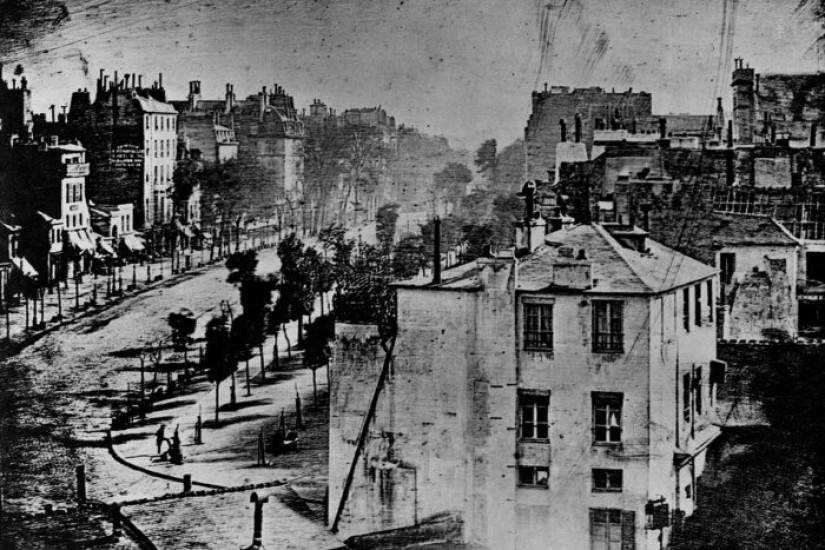Morse was immediately taken with the new technology. Despite his initial fears that the daguerreotype would divert attention from his telegraph, he instantly recognized that its marriage of the visual with the technological would be revolutionary, and he embraced its possibilities. Immediately following his final encounter with Daguerre, Morse penned a letter to his brother Sidney in New York describing the plates. The most often-cited passage is one of the most striking, describing the street scene with the headless gentleman having his boots polished:
Objects moving are not impressed. The Boulevard, so constantly filled with a moving throng of pedestrians and carriages, was perfectly solitary. Except an individual who was having his boots brushed. His feet were compelled, of course, to be stationary for some time, one being on the box of the boot-black, the other on the ground. Consequently, his boots and legs are well defined, but he is without body or head because these were in motion.
Morse sailed home on the same ship that carried his letter, and his brother Sidney published this letter in his newspaper the New-York Observer on April 20, 1839, the first in a long series of articles the paper ran on daguerreotyping. While this publication was not the first report of the daguerreotype to appear in the United States, it was the first firsthand account of the new technology published in the country. It also appears to have been the most widely disseminated early account of daguerreotyping in America; it was reprinted in several other New York papers, in Philadelphia, New Orleans, and at least twice in Boston, in a matter of days.
Rather than viewing the new medium as a potential threat to his telegraph, as he had in earlier correspondence, Morse begins to stress the medium’s potential in his letter, particularly in relation to art and portraiture. “The impressions of interior views are Rembrandt perfected,” Morse wrote, “No painting or engraving ever approached it.” This reference to an Old Master painter is quite telling. It signals that in addition to his recognition of the new medium’s potential to enter the American market as a technological force, Morse is also declaring, in a very public manner, that the daguerreotype is at least on par with (if not superior to) his long-chosen profession and passion, fine art.
He also sensed its commercial potential right away. Having been a successful portrait painter for many years, he immediately wondered whether the daguerreotype could be used for that purpose. Though Daguerre assured him that this was unlikely, Morse seemed to land upon the idea of exhibiting photographic portraits almost immediately.
